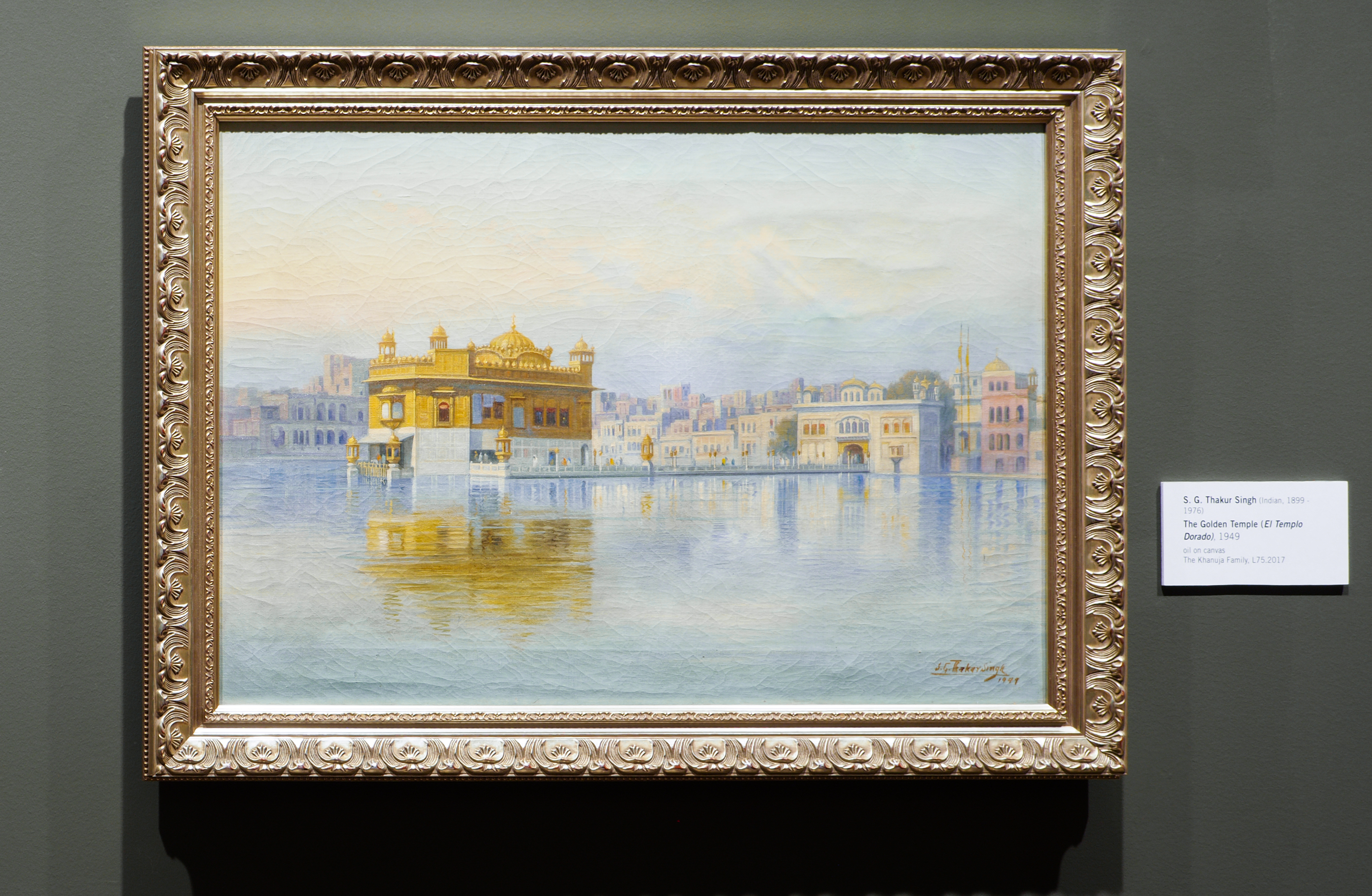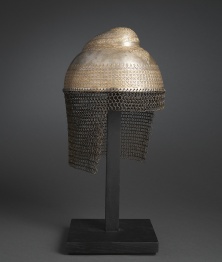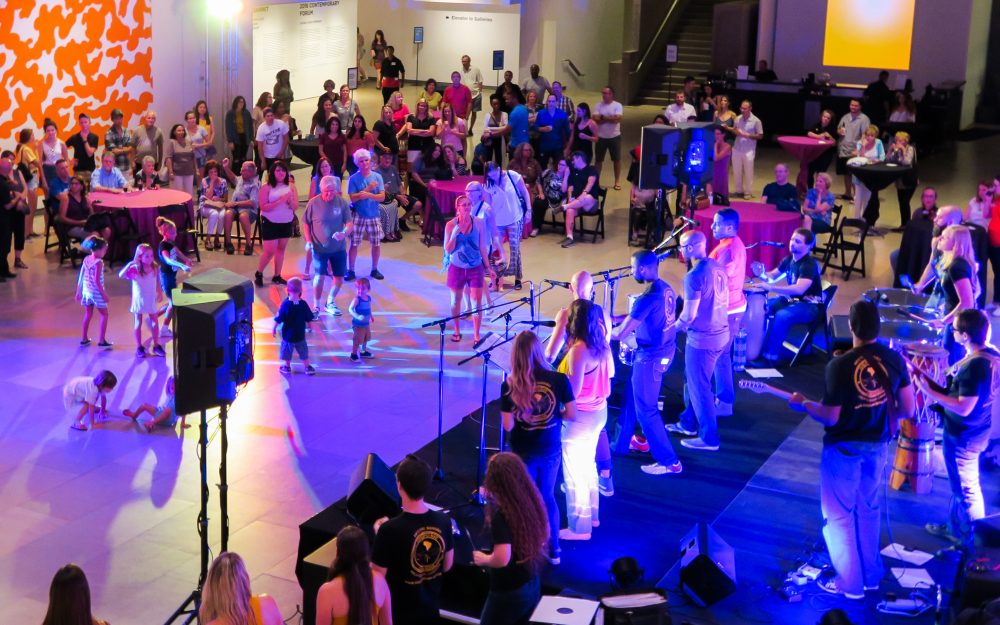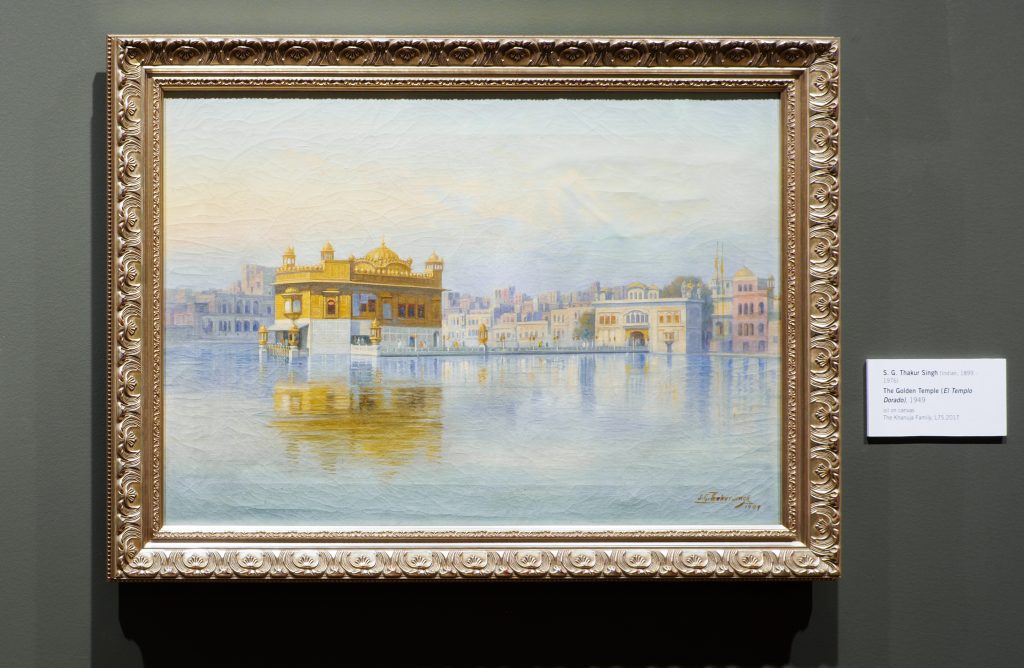
ABOUT THIS EXHIBIT
The founder of Sikhism, Guru Nanak (1469-1539) lived in the Punjab region of India, which includes today’s north India and Pakistan. Sikhism set out the devotional path that God is One and all creation is equal, without distinction by caste, creed, race, gender or station in life. Guru Nanak was succeeded by nine gurus; the Tenth Guru decreed that no individual would succeed him but spiritual guidance would be drawn from the Holy Book (Guru Granth Sahib).
IMAGE CREDIT
Unknown, Sikh turban helmet, 19th century. Metal. The Khanuja Family.

ABOUT THIS EXHIBIT
Since its founding, Sikhism has grown to include followers on all inhabited continents. Sikhs have played important roles throughout world history. Sikhs were an integral part of the British Empire in India, especially as Khalsa, the pure and saintly soldiers of righteousness ordained by the Tenth Guru. The British government utilized Sikh military prowess in India and other British Commonwealth territories. In the 1870s, some Sikhs moved to Malaysia and Hong Kong to serve as city policemen. During World Wars I & II, Sikh troops, including a women’s auxiliary corps, participated in numerous combat zones. In the late 19th century, Sikhs became immigrants to the US and Canada and have since integrated into many Western countries.
Virtue and Valor: Sikh Art and Heritage is organized by Phoenix Art Museum. The Museum expresses its appreciation to the Khanuja family for their support of Asian Art.
IMAGE CREDIT
S. G. Thakur Singh, Golden Temple, 1949. The Khanuja Family.

Featuring more than 20,000 objects, the collection spans the globe, bringing the world to our city, and our city to the world.

Discover a world of programs, workshops, and more, and experience your museum in a whole new way.
EXHIBITIONS
On view for a limited time, exhibitions present art from across the centuries and the globe, from iconic fashion to Old Master paintings, contemporary photography to historical objects of Asia.
MOREARTISTS IN THE COLLECTION
Discover the biographies, histories, and works of featured artists in the Phoenix Art Museum Collection.
MORECOLLECTIONS
Featuring more than 20,000 objects in nine collecting areas, the collection spans many cultures and periods, bringing the world to our city, and our city to the world.
MORE